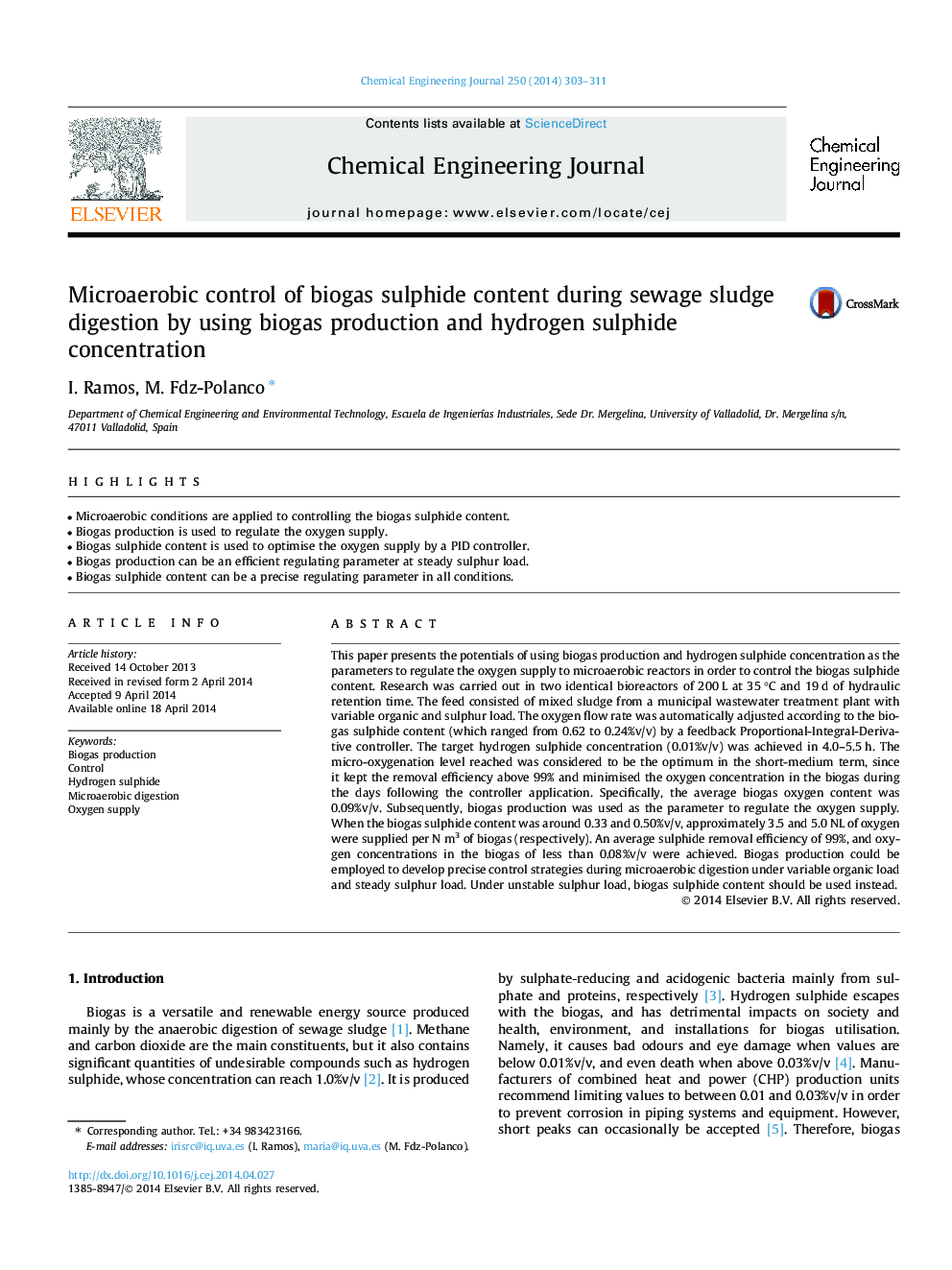| Article ID | Journal | Published Year | Pages | File Type |
|---|---|---|---|---|
| 147362 | Chemical Engineering Journal | 2014 | 9 Pages |
•Microaerobic conditions are applied to controlling the biogas sulphide content.•Biogas production is used to regulate the oxygen supply.•Biogas sulphide content is used to optimise the oxygen supply by a PID controller.•Biogas production can be an efficient regulating parameter at steady sulphur load.•Biogas sulphide content can be a precise regulating parameter in all conditions.
This paper presents the potentials of using biogas production and hydrogen sulphide concentration as the parameters to regulate the oxygen supply to microaerobic reactors in order to control the biogas sulphide content. Research was carried out in two identical bioreactors of 200 L at 35 °C and 19 d of hydraulic retention time. The feed consisted of mixed sludge from a municipal wastewater treatment plant with variable organic and sulphur load. The oxygen flow rate was automatically adjusted according to the biogas sulphide content (which ranged from 0.62 to 0.24%v/v) by a feedback Proportional-Integral-Derivative controller. The target hydrogen sulphide concentration (0.01%v/v) was achieved in 4.0–5.5 h. The micro-oxygenation level reached was considered to be the optimum in the short-medium term, since it kept the removal efficiency above 99% and minimised the oxygen concentration in the biogas during the days following the controller application. Specifically, the average biogas oxygen content was 0.09%v/v. Subsequently, biogas production was used as the parameter to regulate the oxygen supply. When the biogas sulphide content was around 0.33 and 0.50%v/v, approximately 3.5 and 5.0 NL of oxygen were supplied per N m3 of biogas (respectively). An average sulphide removal efficiency of 99%, and oxygen concentrations in the biogas of less than 0.08%v/v were achieved. Biogas production could be employed to develop precise control strategies during microaerobic digestion under variable organic load and steady sulphur load. Under unstable sulphur load, biogas sulphide content should be used instead.
